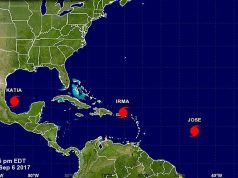How and why is this fish still flailing about and seemingly trying to escape 40 minutes after its head and guts were removed? It’s a pretty common phenomenon.
We also see the same jerking movements from fresh raw frogs’ legs and diced up squid. The explanation is a reasonably simple one. Frogs’ legs dancing after being laced with salt. Posted by Thearchipelagos via YouTube.
All cells are polarized, which means that there is a high-to-low gradient of charged atoms, or ions, from inside cells to outside them. The difference between these concentrations is what creates a charge across a membrane, according to iflscience.com.
When not being activated by the nervous system, neurons maintain their membrane potential by pumping out a balance of sodium and potassium ions (both needed to instigate neurons firing). However, when the neuron is activated with an electric signal, specific channels within the cell open up, allowing sodium ions to flood in – and as equilibrium of charge in the cell to its environment is required, potassium channels are, as a result, also opened up, causing them to flood out of the cell.
Eventually the channels close and the neurons work to restore balance between concentrations of sodium and potassium inside and outside them – but not before triggering nearby channels to open, causing a chain reaction within the muscle.
This is basically how neurons create movement within a tissue.
As previously mentioned, immediately after death, motor neurons maintain some membrane potential, or difference in ion charge, which then starts a domino effect down neural pathways causing movement. Adding additional sodium, in the form of table salt or soy sauce, will significantly increase the reaction.
So Mr. Frog and Mr. Fish are definitely dead – their muscles just haven’t got the memo yet.bsp;










